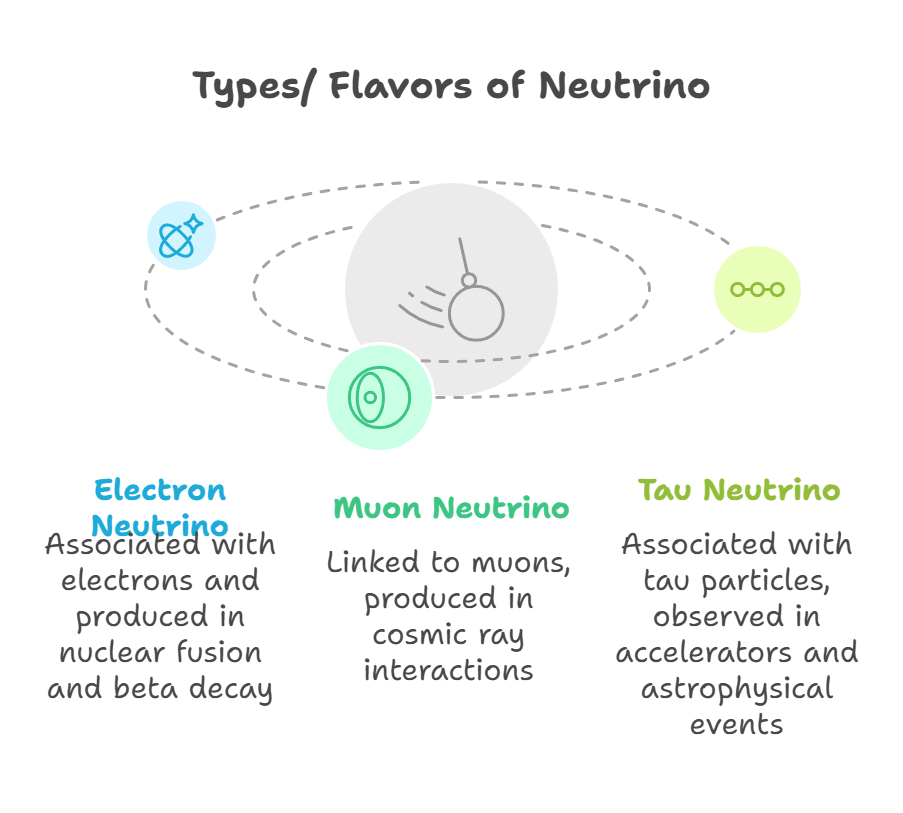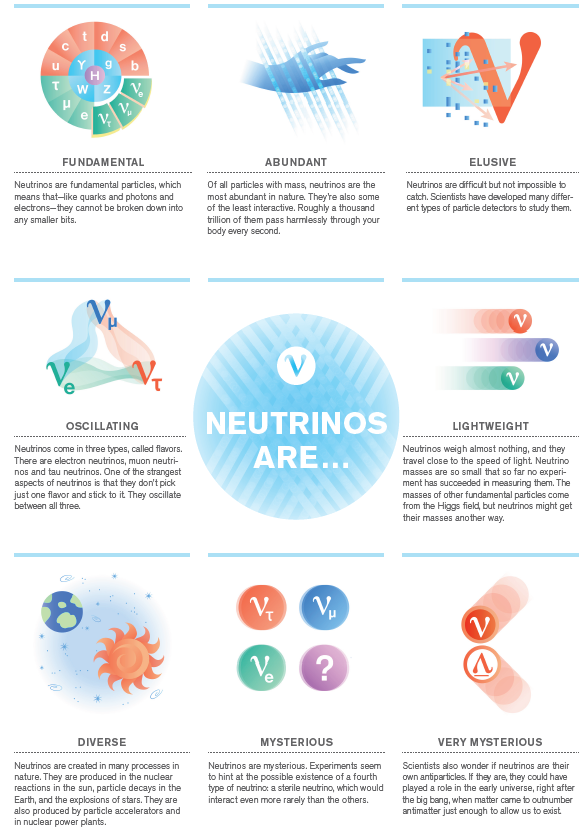Important Facts For Prelims
Detection of Most Energetic Neutrino
- 22 Feb 2025
- 3 min read
Scientists detected the highest-energy neutrino using the KM3NeT (Cubic Kilometre Neutrino Telescope) observatory in the Mediterranean Sea.
- It was 30 times more energetic than any previously observed, 1015 times more energetic than photons, and 10,000 times more powerful than particles from the Large Hadron Collider, the world's largest particle accelerator.
Cubic Kilometre Neutrino Telescope (KM3NeT): KM3NeT is an under construction European research facility in the Mediterranean Sea that studies neutrinos.
- It's designed to detect neutrinos from distant sources and from Earth's atmosphere.
Note: India's Neutrino Observatory project is proposed to be set up at Pottipuram village in Theni (Tamil Nadu) in a 1,200-metre-deep cave.
What are Neutrinos?
- About: Neutrinos, often called "ghost particles", are electrically neutral, nearly massless subatomic particles that rarely interact with matter.
- This allows them to travel vast distances through stars, planets, and galaxies without being deflected by magnetic fields, making them reliable "cosmic messengers."
- Sources of Neutrinos:
- Natural Sources: Sun (solar neutrinos), Nuclear reactions in stars, supernovae, and cosmic rays.
- Artificial Sources: Nuclear reactors, radioactive decay and particle accelerators.
- Big Bang Neutrinos: Remnants from the early universe, contributing to cosmological studies.
- Types/Flavors of Neutrinos:

- Neutrinos undergo oscillation (change from one flavour to another) while traveling due to quantum mixing.
- Significance in Astrophysics:
- Neutrinos, unlike cosmic rays, travel undisturbed, making them crucial for tracing high-energy astrophysical events.
- Scientists detect neutrinos using deep-sea or ice observatories that capture Cherenkov radiation (a detectable flash of light) from rare interactions.
UPSC Civil Services Examination Previous Year Question (PYQ)
Q. In the context of modern scientific research, consider the following statements about ‘IceCube’, a particle detector located at South Pole, which was recently in the news: (2015)
- It is the world’s largest neutrino detector, encompassing a cubic kilometre of ice.
- It is a powerful telescope to search for dark matter.
- It is buried deep in the ice.
Which of the statements given above is/are correct?
(a) 1 only
(b) 2 and 3 only
(c) 1 and 3 only
(d) 1, 2 and 3
Ans: (d)





